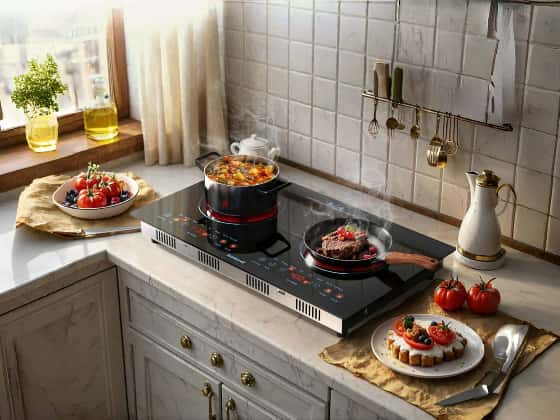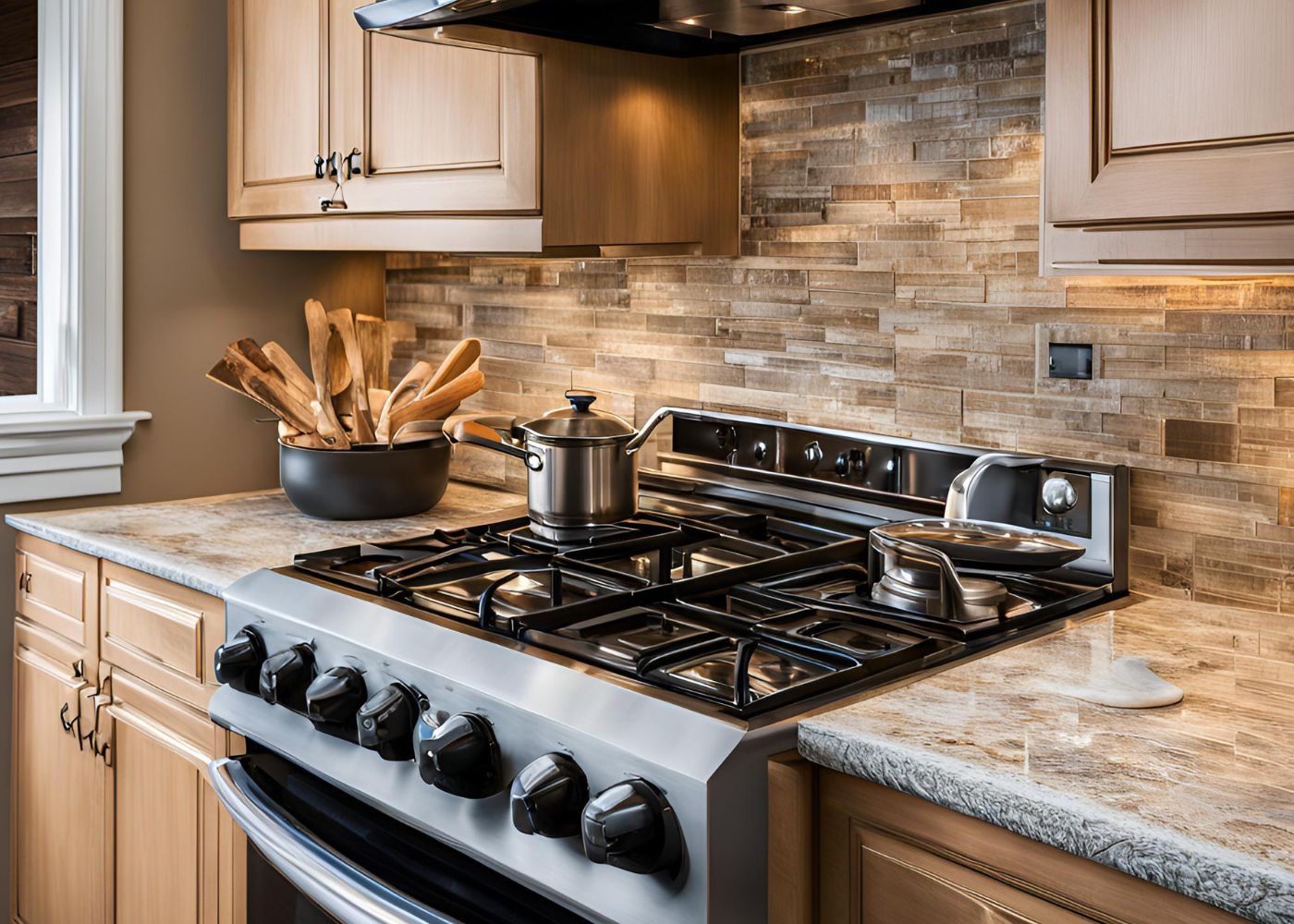
How do induction ranges work?
Induction cooktops portable use the principle of electromagnetic induction, which happens when an alternating electric current travels through a coil, resulting in a fluctuating magnetic field. This magnetic field creates an electrical current within ferromagnetic cookware, forcing the molecules to vibrate rapidly and generate heat directly in the cookware.
Unlike standard cooktops, which use radiant heat or a direct flame,Portable induction cooktops only transfer energy to cookware that is compatible with the magnetic field. This ensures that the stovetop surface remains reasonably cool, lowering the risk of unintentional burns and making cleanup. easier.
Benefits of induction ranges
Induction range offers several advantages over traditional cooking methods, making it an attractive choice for modern kitchens:
-
Energy Efficiency: Induction ranges are highly energy-efficient, as they directly heat the cookware rather than relying on heat transfer through intermediary surfaces. This results in less energy waste and faster heating times.
-
Precise Temperature Control: With Induction ranges , you can precisely control the temperature of your cookware, allowing for accurate and consistent cooking results. This is particularly beneficial for delicate dishes or recipes that require precise temperature regulation.
-
Safety: Induction cooktops portable are safer than gas or electric cooktops because the cooktop surface itself does not get hot. Only the cookware heats up, reducing the risk of accidental burns or fires.
-
Easy Cleaning: Since the cooktop surface remains relatively cool, spills and splatters do not bake onto the surface, making it easier to clean and maintain a hygienic cooking environment.
-
Rapid Heating and Cooling: Induction ranges heat up and cool down quickly, allowing for efficient cooking and energy savings when not in use.
-
Versatility: Many Induction ranges offer a range of features and settings, such as power boost modes, timers, and automatic shut-off functions, enhancing the overall cooking experience.
Types of induction cookware materials
To ensure compatibility with induction ranges, cookware must be made of ferromagnetic materials that can effectively generate electric currents when exposed to the electromagnetic field. Here are some common induction cookware materials:
-
Cast Iron: Cast iron is an excellent choice for induction ranges, due to its high ferromagnetic properties. Cast iron cookware is durable, heats evenly, and retains heat well, making it suitable for a wide range of cooking tasks.
-
Enameled Cast Iron: Enameled cast iron cookware combines the benefits of cast iron with a smooth, non-stick enamel coating. This type of cookware is compatible with induction ranges,and offers easy cleaning and maintenance.
-
Magnetic Stainless Steel: Certain grades of stainless steel, such as 18/10 or 18/8, contain ferromagnetic materials like iron or nickel, making them suitable for induction cooktop portable . Look for cookware labeled as "induction-ready" or "induction-compatible."
-
Carbon Steel: Carbon steel is another ferromagnetic material that works well with induction cooktops. It heats up quickly and evenly, making it a popular choice for professional kitchens and home cooks alike.
-
Cast Aluminum with Magnetic Base: Some aluminum cookware is designed with a magnetic base or encapsulated bottom layer, allowing it to be used on induction cooktops. These pans combine the heat distribution properties of aluminum with induction compatibility.
* It's important to note that not all cookware labeled as "stainless steel" or "aluminum" is suitable for induction ranges. Always check the manufacturer's specifications or perform a magnet test to ensure compatibility with your induction cooktop.
Induction hob tips and tricks
To make the most of your induction hob experience, here are some helpful tips and tricks:
-
Use Flat-Bottomed Cookware: Ensure that your cookware has a flat, smooth bottom to maximize contact with the induction cooktop surface. Warped or uneven bottoms can cause hot spots and uneven heating.
-
Match Cookware Size to Burner Size: For optimal efficiency, choose cookware that closely matches the size of the induction burner. Using cookware that is significantly smaller or larger than the burner can result in uneven heating and energy waste.
-
Preheat Cookware: Induction hobs heat up quickly, but it's still a good practice to preheat your cookware before adding ingredients. This helps ensure even cooking and prevents sticking or burning.
-
Use Lower Heat Settings: Induction hobs are highly efficient, so you may need to adjust your cooking habits and use lower heat settings than you would with traditional cooktops.
-
Avoid Sliding Cookware: Sliding or dragging cookware across the induction cooktop surface can cause scratches or damage. Always lift and place cookware gently on the surface.
-
Clean Regularly: Keep the induction hob surface clean and free from spills or debris to ensure optimal performance and prevent damage.
-
Consider Induction-Compatible Cookware Sets: If you're starting fresh or upgrading your cookware, consider investing in an induction-compatible cookware set designed specifically for induction cooking. These sets often include a variety of pots and pans in different sizes and materials, ensuring versatility and compatibility.
Conclusion: Finding the perfect induction cookware for your induction range
Induction range is a modern and efficient way to prepare meals, offering precise temperature control, energy savings, and enhanced safety. To fully enjoy the benefits of this technology, it's essential to choose the right cookware materials that are compatible with induction cooktops.
From cast iron and magnetic stainless steel to enameled cast iron and carbon steel, there are various options to consider. When selecting induction cookware, prioritize flat-bottomed pans with ferromagnetic properties, and consider investing in a dedicated induction-compatible cookware set for optimal performance and versatility.










